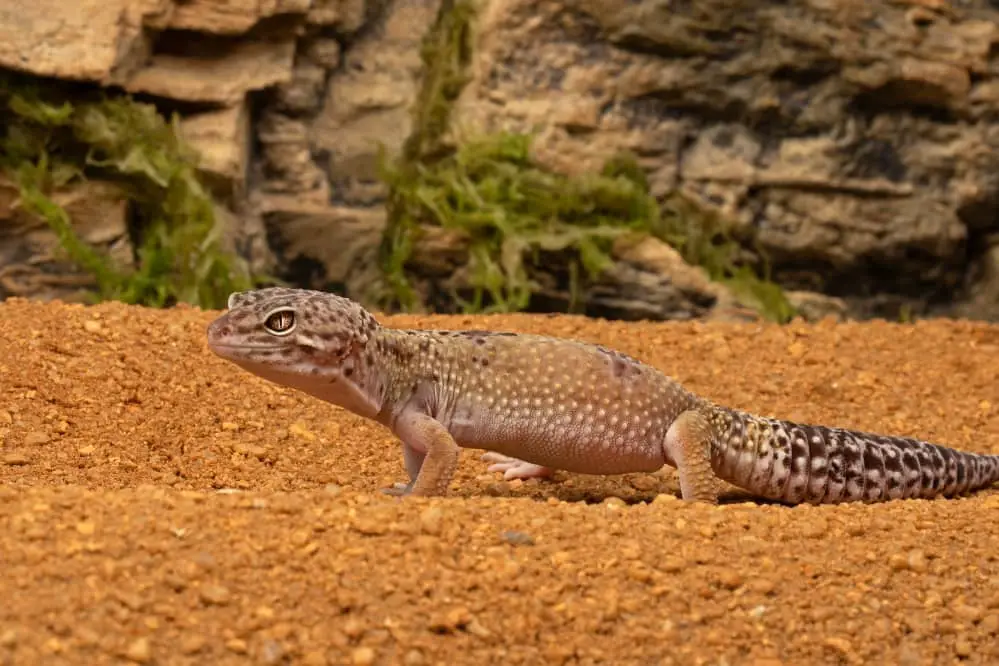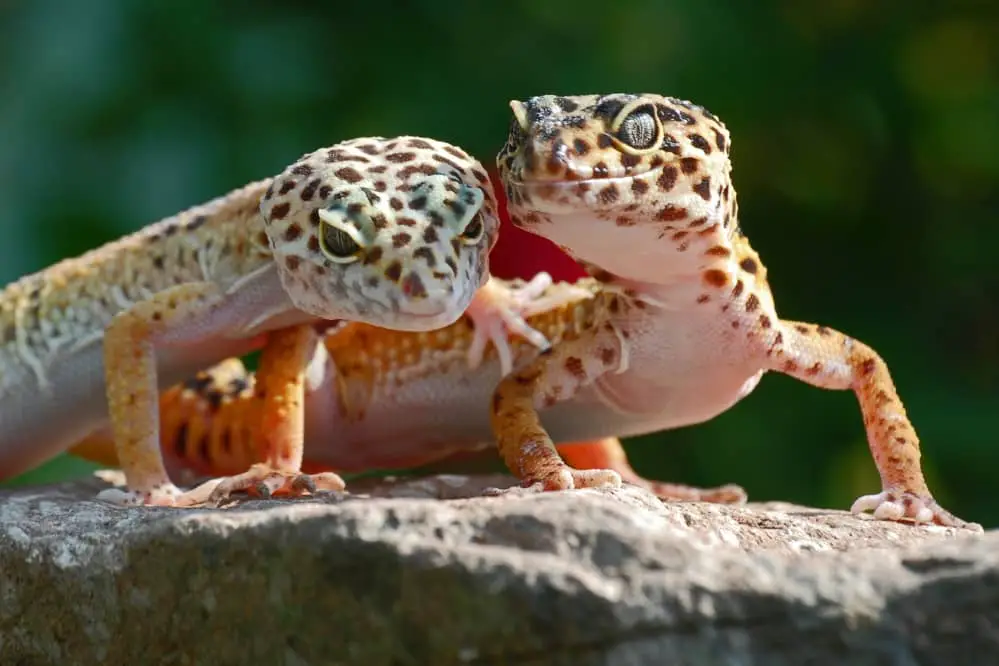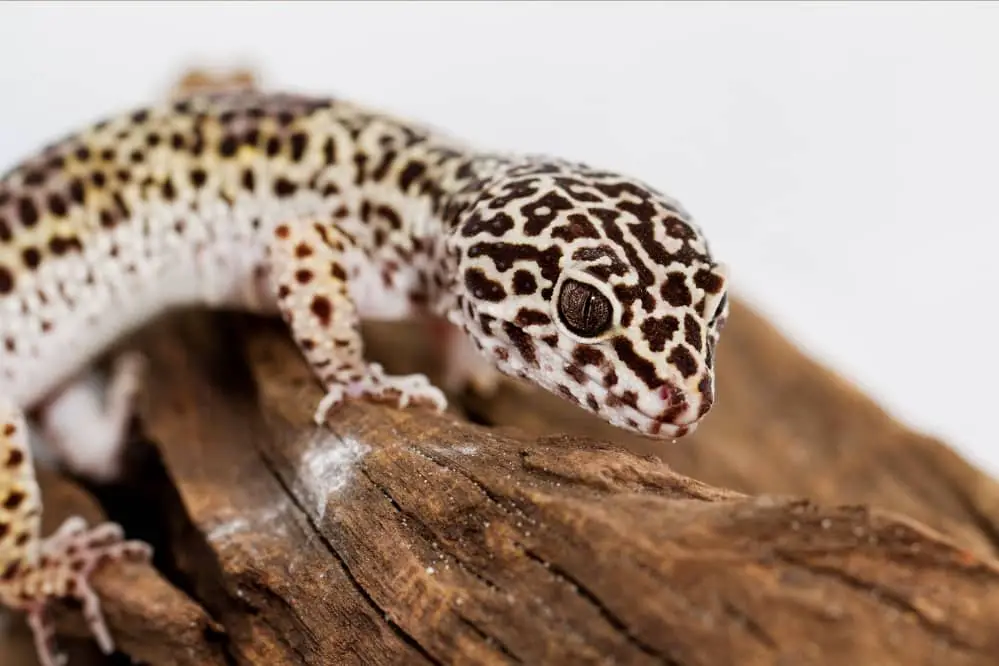Leopard geckos are reptiles, so their growth rate and nutritional needs are considerably different from those of typical house pets like cats and dogs, for this reason, most individuals who keep leopard geckos as pets are often concerned about their growth.
In general, pet leopard geckos grow quickly, and by the age of 18 to 20 months, they are considered full-grown adults. When a pet leopard gecko is a hatchling or juvenile, its growth is often quick; but, as it ages, it normally slows down.
If you own a pet leopard gecko and want to know everything about its growth rate, this article is for you. So continue reading to learn everything about pet leopard gecko growth as well as some helpful advice on how to improve your leopard gecko’s growth from our small animal veterinarian.
How Quickly Do Pet Leopard Geckos Grow?
Leopard geckos are reptiles, and like most other pet reptiles, they grow quickly during the hatchling and juvenile stages. However, after these stages, their growth rate slows down, and it takes them about 8 to 10 months to reach maximum size.
When they are hatchlings, pet leopard geckos measure around 3 inches from nose to tail and weigh only 2-4 grams. Though they grow quickly during this fragile stage, and by the age of two months, they are classified as juveniles.
A juvenile pet leopard gecko measures 5 to 6 inches from nose to tail and can weigh up to 30 grams, while female leopard geckos may weigh less than males.
There is little disagreement among many gecko owners on what happens to their scaly friend after the juvenile stage because some owners believe that leopard geckos turn into sub-adults after reaching this age, while others disagree and believe that the leopard gecko becomes an adult after reaching this stage.
Nonetheless, leopard geckos are classified as sub-adults from 7 months old until they are 9 months old, after which they are considered adults. A pet leopard gecko is deemed a fully grown adult when it is 18 to 20 months old, and at this age, it typically weighs between 60 and 100 grams, depending on the gender since female leopard geckos weigh less than males.
Tips For Rapid Growth For A Pet Leopard Gecko

Here are some tips to help your pet leopard gecko grow more quickly:
- Your leopard gecko’s diet should contain more protein. You should give your reptile companion grub pie (Repashy grub pie) that is rich in protein and other essential nutrients for quick growth. Additionally, if you want your gecko to grow quickly, feed it insects twice a week rather than just once.
- If you want your leopard geckos to grow more quickly, dust the insects before feeding them since pet leopard geckos need a lot of calcium for quick growth.
- Feed your gecko with consistency and don’t skip meals if you want it to develop quickly.
- Before feeding the insects to your pet leopard gecko, gut-loading them can significantly increase their nutritional content. So instead of feeding the insects directly to the gecko, I’ll advise you to gut load the insects on dog food, cat food, or vegetables like carrots.
- Maintaining the enclosure temperature between 78 and 80 degrees Fahrenheit will frequently result in the best growth. Leopard geckos require warmth for their metabolism to work properly.
- When the geckos are kept together, some of them become more dominant and hinder others from eating properly. Additionally, certain leopard geckos can be hesitant when around other geckos, which prevents them from eating their food adequately.
Does Location Impact The Growth Rate Of A Leopard Gecko?
Since they live in a controlled environment, your leopard gecko’s growth rate is generally unaffected by location. Even if you live in a region with frequent snowfall and subfreezing temperatures, the climate won’t affect how quickly your gecko grows until and unless you keep its habitat at the right temperature.
If the temperature of its enclosure remains below 70 degrees Fahrenheit regularly, your leopard gecko’s growth will be slow because its metabolism and biological functions will slow down.
However, the temperature of the enclosure should never drop below 60 degrees Fahrenheit since it may negatively impact your pet’s overall health. Ideally, the temperature of a leopard gecko’s enclosure should be between 78 and 80 degrees Fahrenheit for optimal growth rate.
Does Overfeeding A Pet Leopard Gecko Help It To Grow Faster?
When feeding your pet leopard gecko, keep in mind that quality is always more important than quantity. The growth of your leopard gecko won’t be affected by overfeeding, but enhancing the quality of its diet will undoubtedly improve its growth rate.
Instead of increasing the number of insects or food, increase the protein content and gut-load the insects. This will help your pet leopard gecko get more nutrients while still eating what it can bear.
You should allow your pet leopard gecko to eat as many insects as it wants during its feeding session without force-feeding. A leopard gecko that has been overfed will usually become lethargic, obese, and may even regurgitate its food.
Why Is My Pet Leopard Gecko Not Growing Faster?
The factors listed below could be the cause of your pet leopard gecko’s improper growth:

- If there are multiple leopard geckos living in the same enclosure and one of them is dominant over the others, or if there is not enough room for the gecko in the enclosure.
- If the temperature in the gecko’s enclosure consistently falls below 75 degreesFahrenheit.
- Your leopard gecko’s diet is lacking in protein.
- Lack of supplementation in the diet of your leopard gecko.
- The diet of your leopard gecko is imbalanced.
- Tail healing may be one of the causes of your leopard gecko’s delayed growth because it requires a lot of protein and nutrients for a leopard gecko to regrow its tail. Additionally, your leopard gecko will grow slowly if it has an illness.
Summary
Normally, leopard geckos grow fast, and it takes them 18 months to reach their maximum adult size. However, a leopard gecko’s sexual maturity is more influenced by its weight than by its age, therefore if a leopard gecko weighs more than 35 grams, it can usually reproduce.
When geckos are between the ages of 7 and 9 months, some gecko owners consider their scaly companions to be sub-adults. However, many gecko owners disagree with it. Nevertheless, if you see that your leopard gecko is not eating well, is lethargic, and is not growing as it should, you should take it to the veterinarian.

